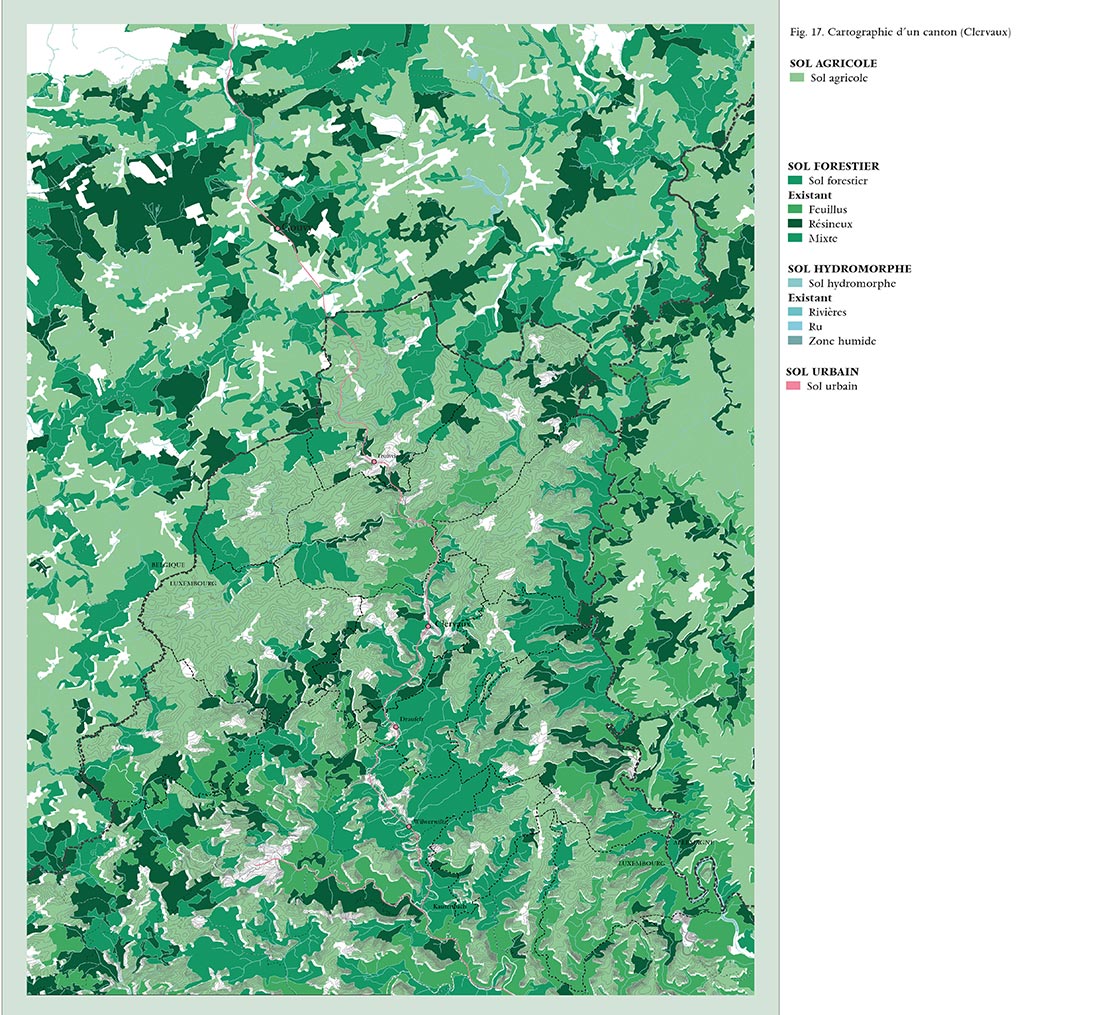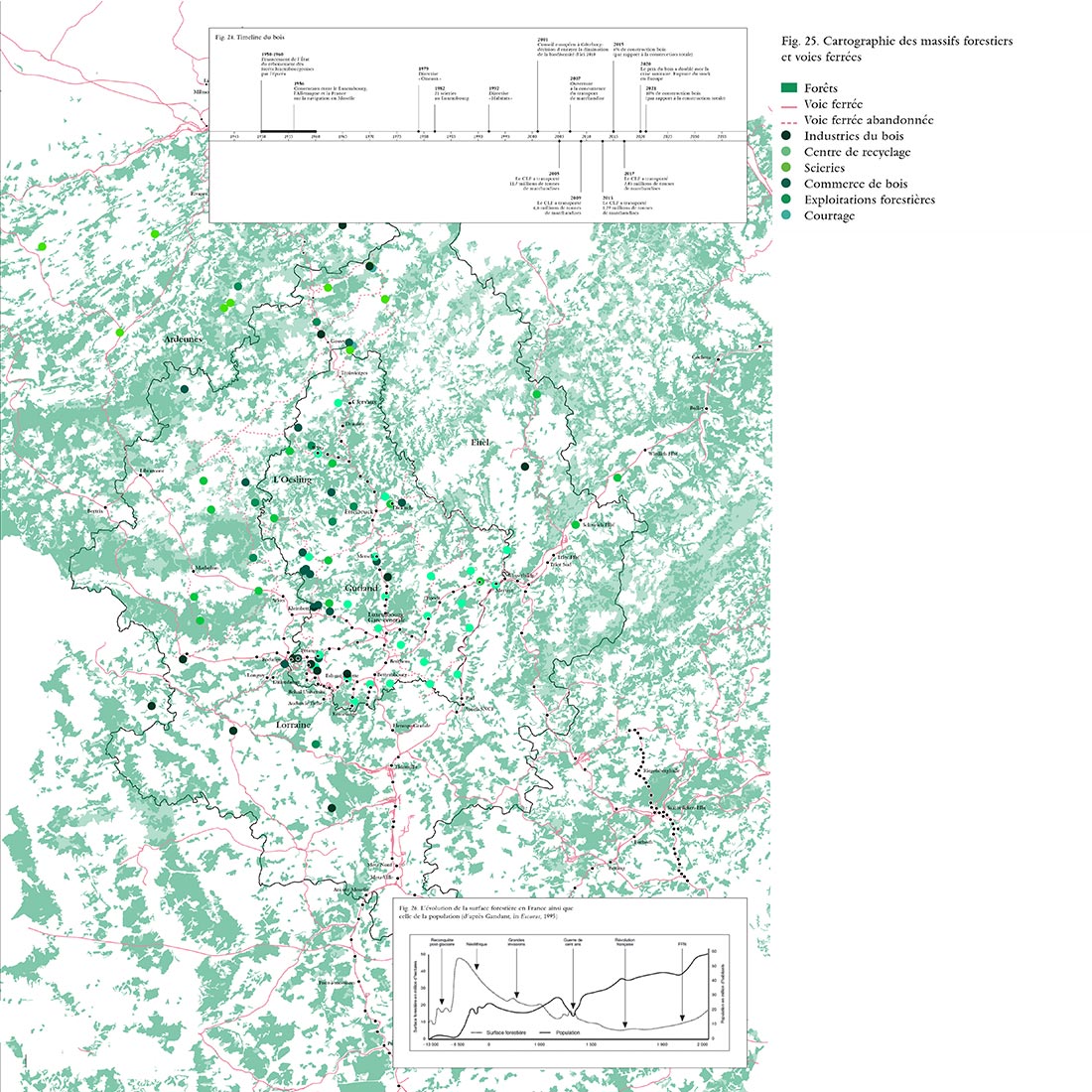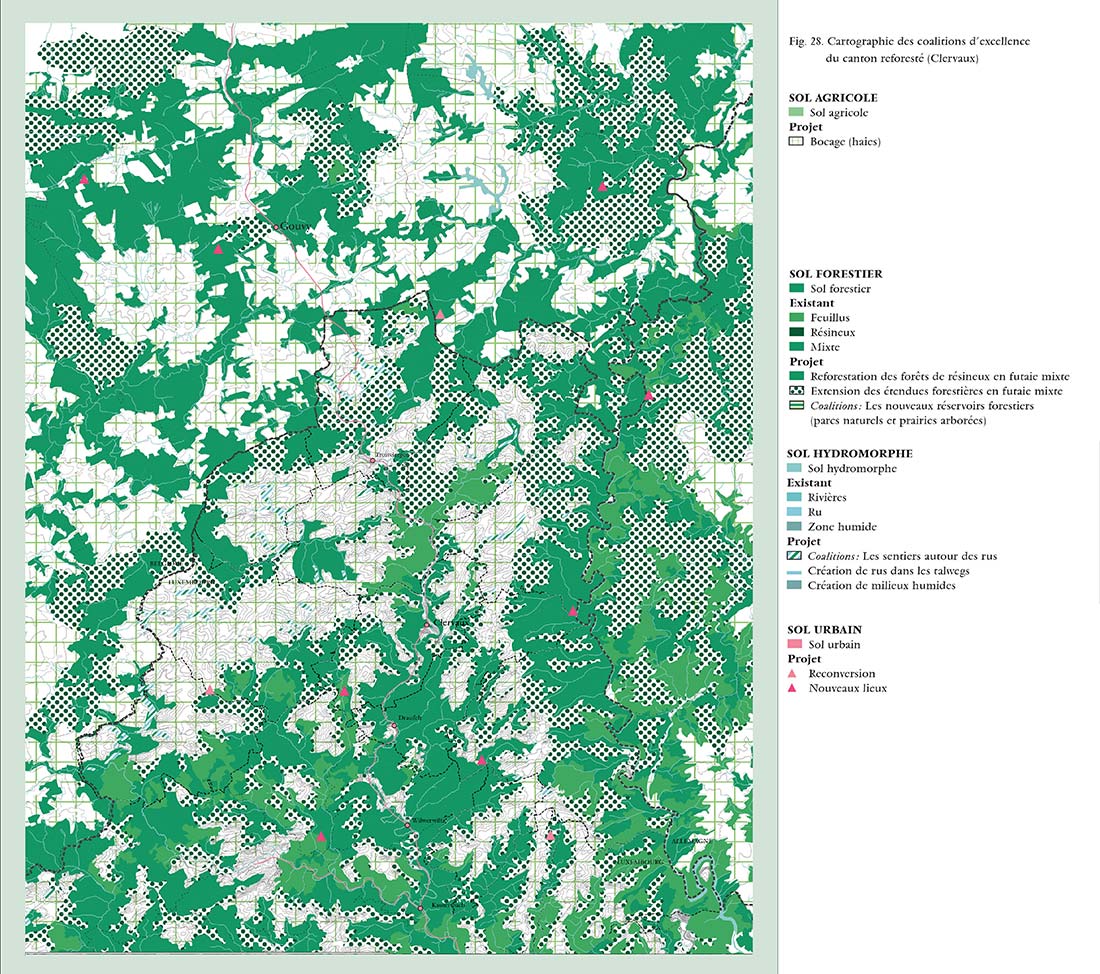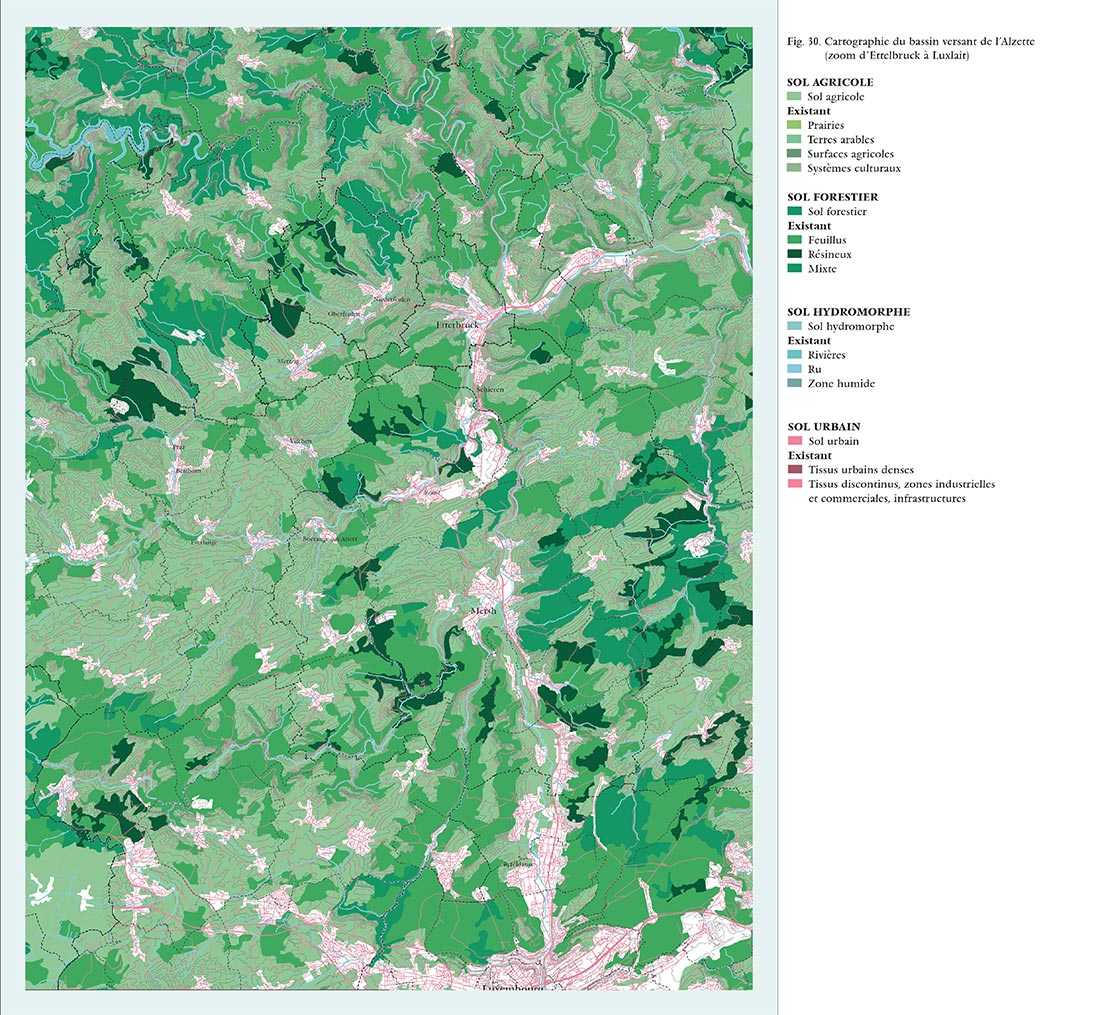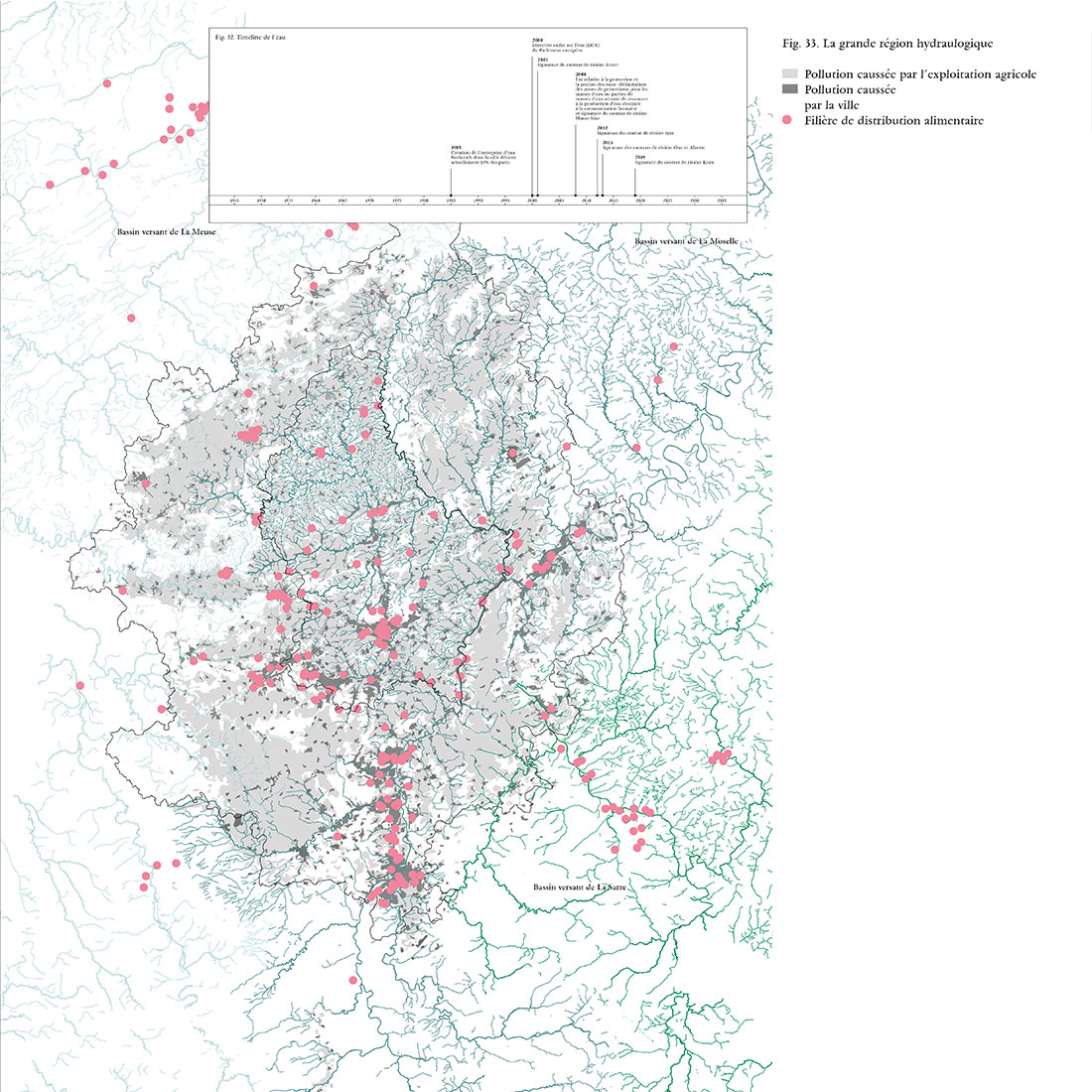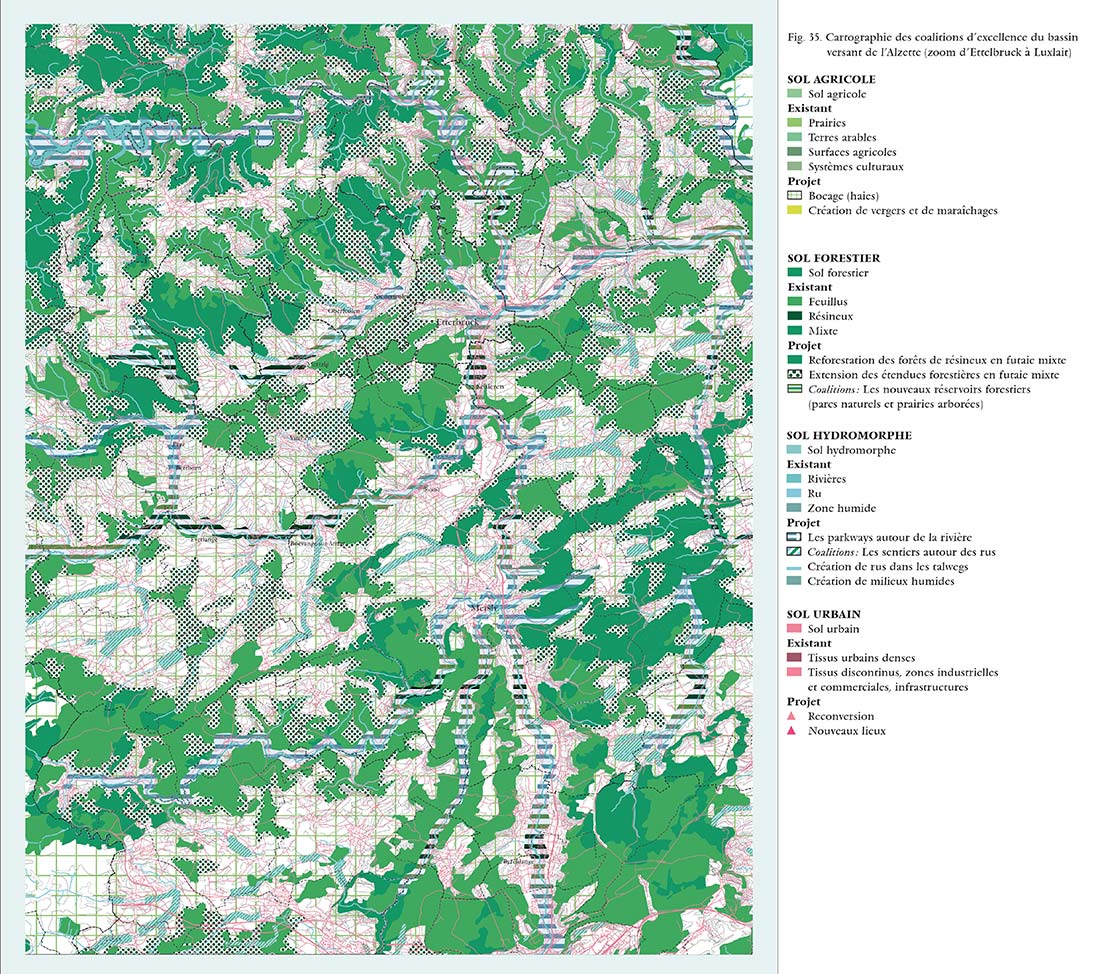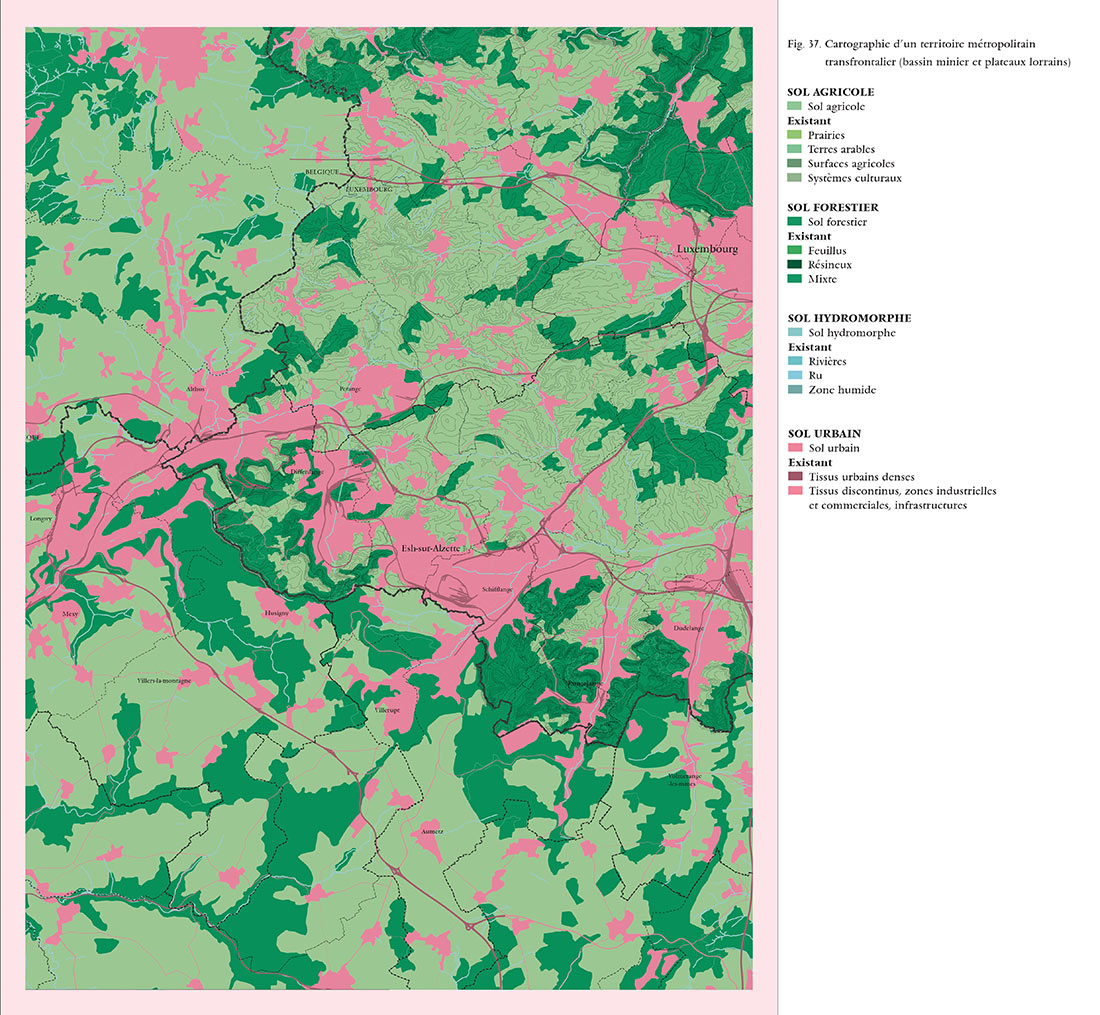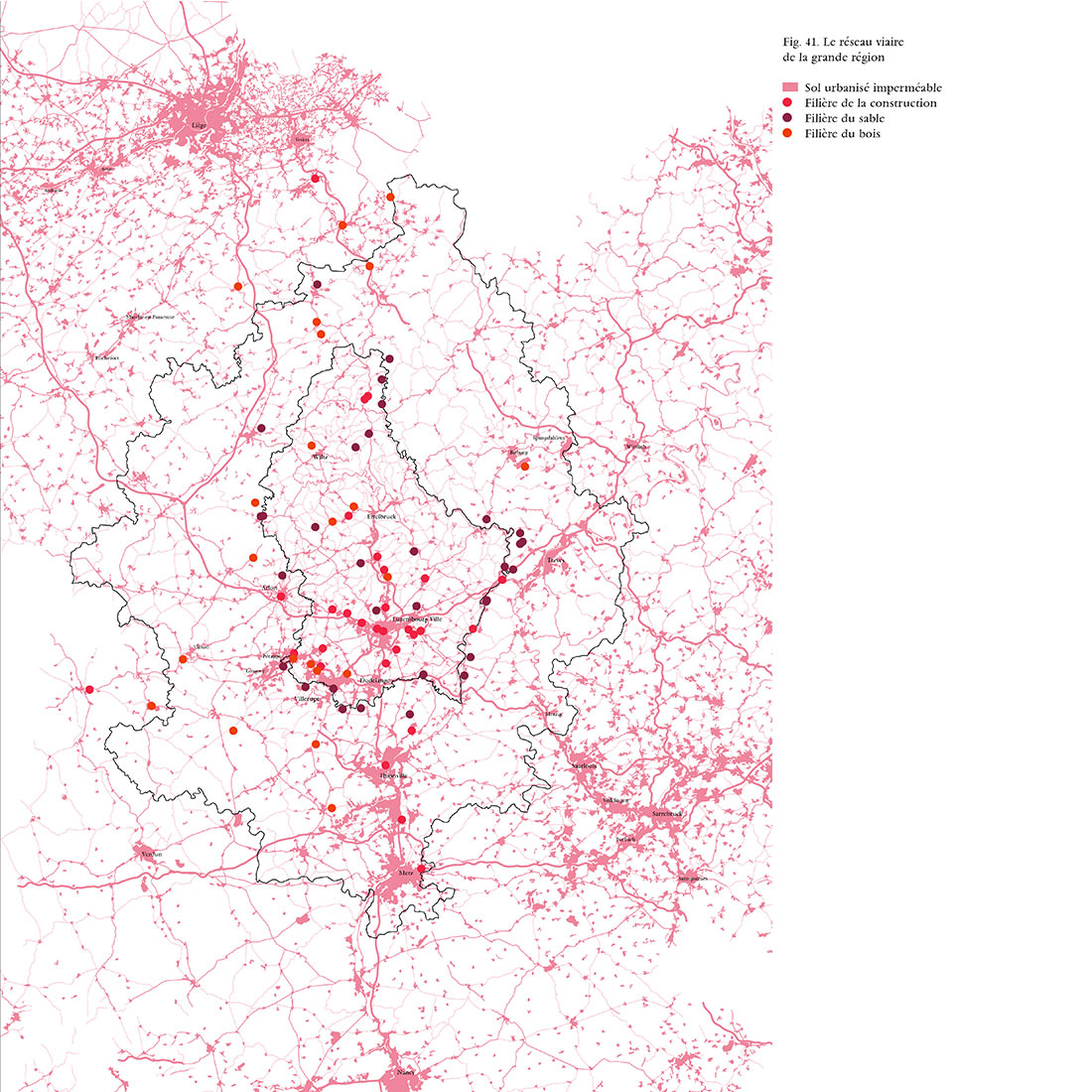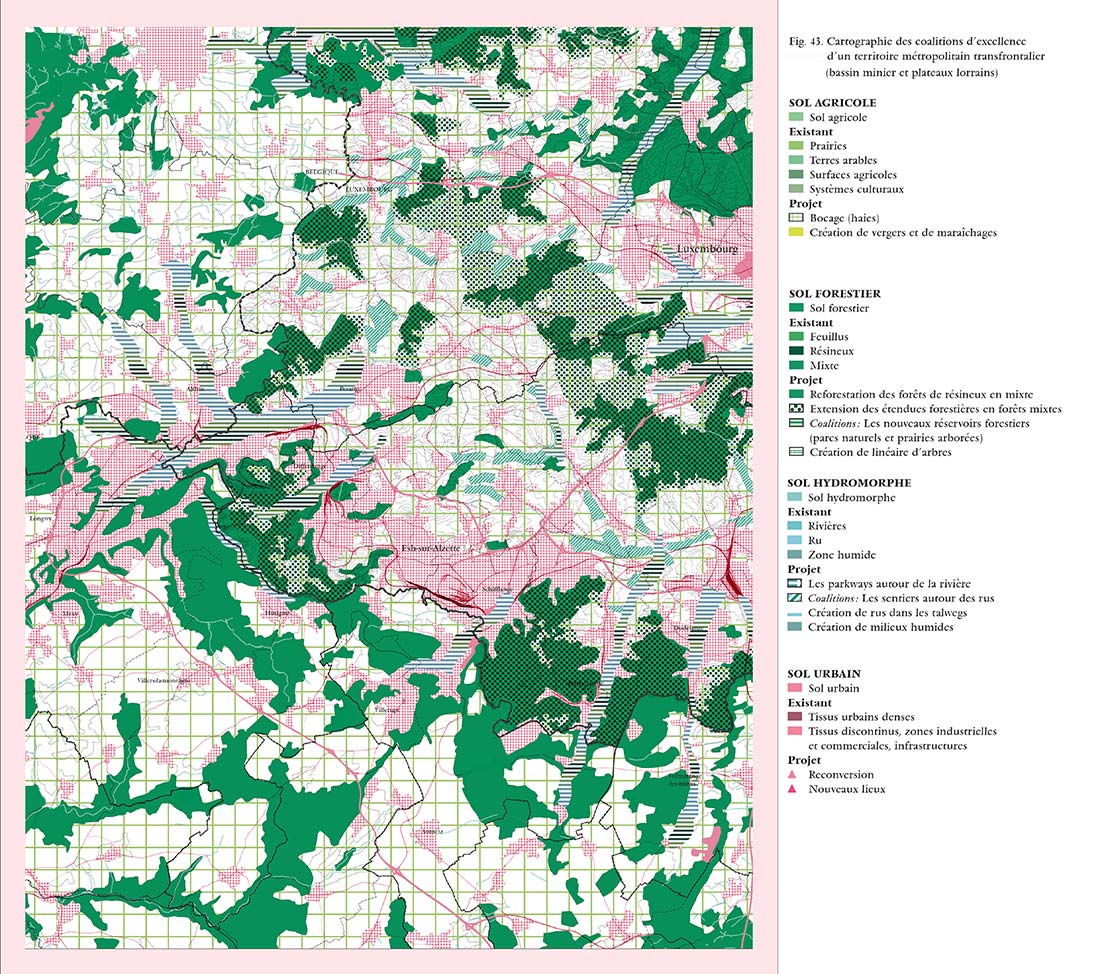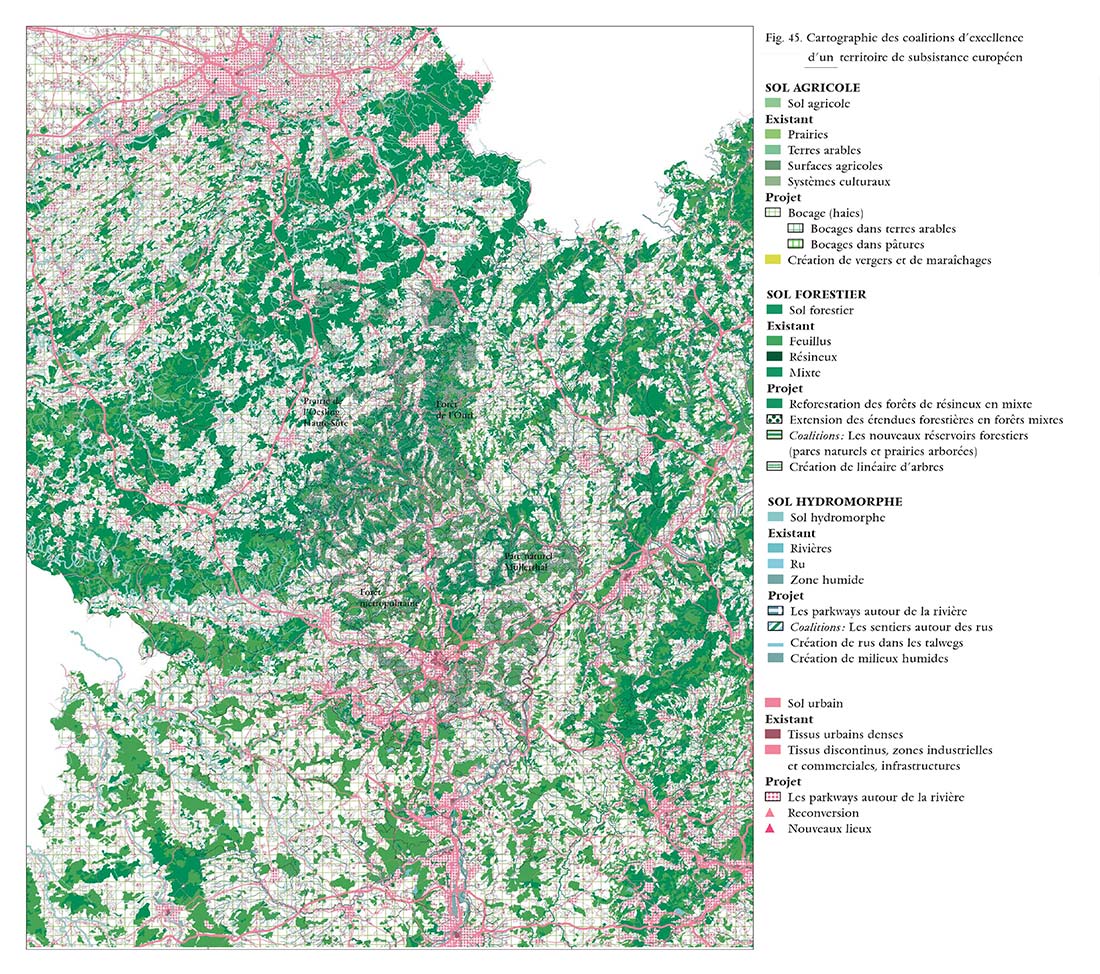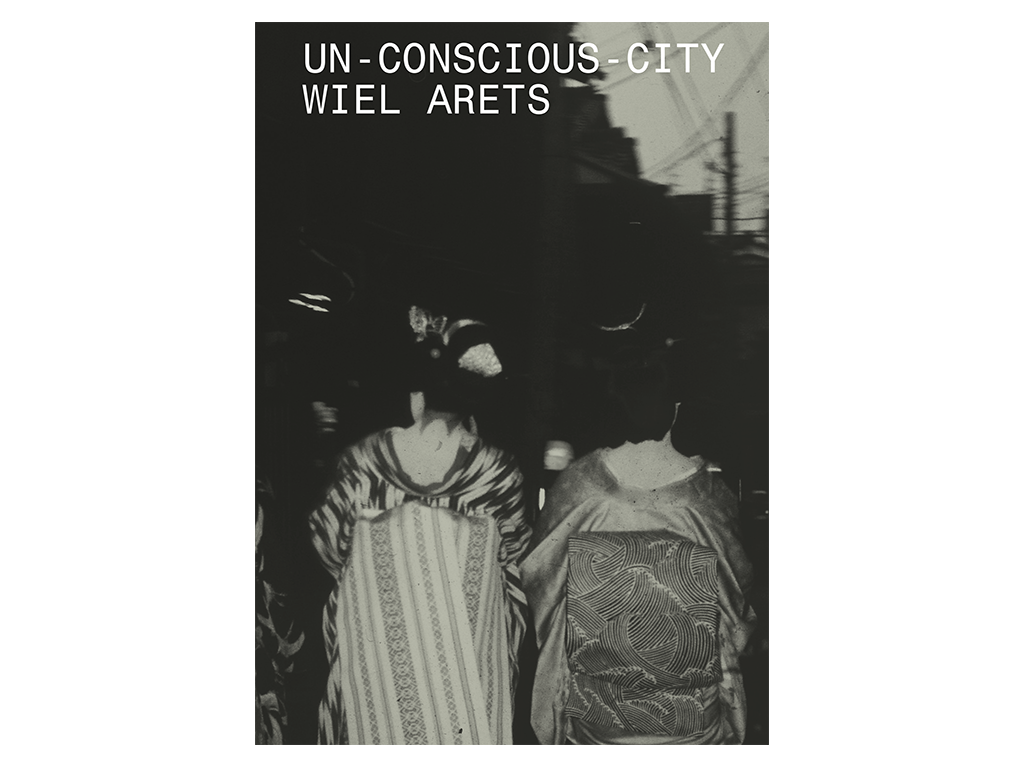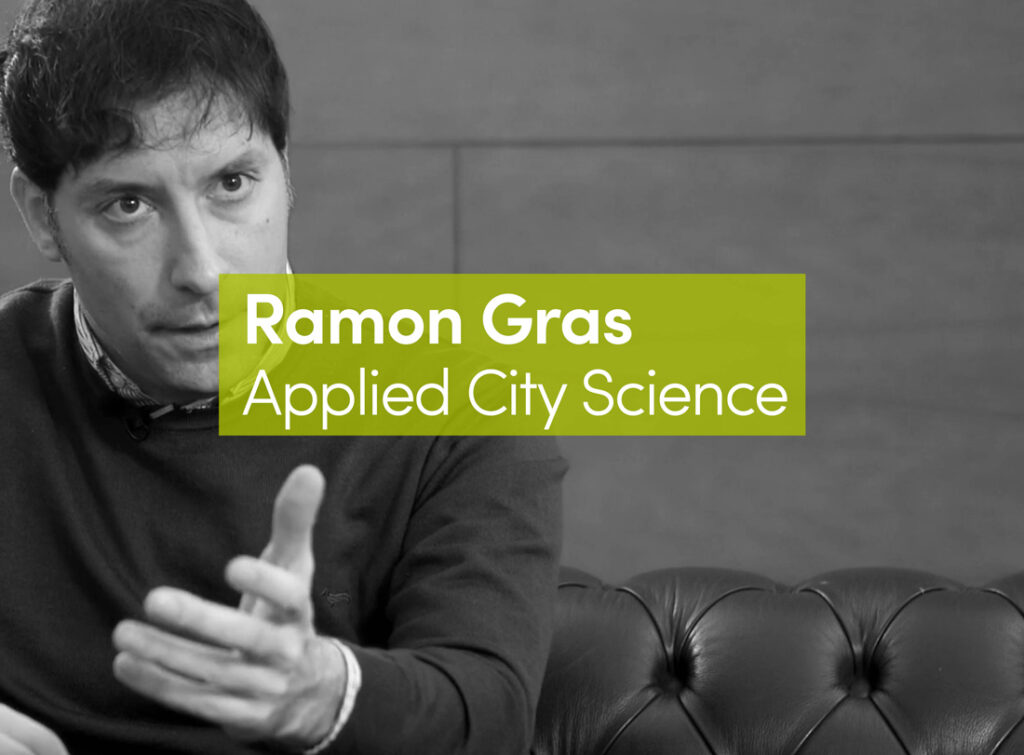The consultation Luxembourg in Transition: Spatial Visions for the Aero-carbon and Resilient Future of the Luxembourg Functional Region aims to bring together strategic proposals for spatial planning and produce ecological transition scenarios by 2050 for the Grand Duchy of Luxembourg and its border regions. The objectives for the reduction of greenhouse gas (GHG) emissions established by the European Climate Plan have prompted us to innovate and invent a method for articulating carbon footprint measurement with the region’s ecological and social reality. Our proposal aims to build an everyday metric, seeking to locate GHG emissions with precision, in order to conduct a diagnosis of the infrastructures of the Luxembourg subsistence region – that is, the region that supports everyday activities and which currently greatly exceeds the Grand Duchy’s capacities.
The study follows the journey of a few selected materials and details food and construction chains, from extraction to consumption, revealing the weaknesses and potentials of the infrastructures that organize the Luxembourg region. This perspective makes it possible to imagine a transition towards more sustainable means of subsistence, which combines a metropolitan vision of the region, focused on urban polarities, with a rural vision focused on resource landscapes. The infrastructure of subsistence is understood as a structure that is both robust and flexible, enabling resilience and adaptation to social and environmental changes. It involves reorienting certain systems of production that Luxembourg is famous for today, but which are the source of significant greenhouse gas emissions, soil pollution and damage to biodiversity. This infrastructure of subsistence could be implemented through new coalitions between agriculture, forestry and urban spaces that will allow Luxembourg to move from a productivist model of resource management toward the ecological management of the region.
Over the past three centuries of industrialization, the land has constantly lost meaning, value and volume to decontextualized and dematerialized activities. Our carbon-based society ignores the three-dimensional resource that is the ground. In Luxembourg, and more widely in Western Europe, since the 1950s the introduction of agricultural management methods based on the control of farms by chemical means, followed by the deregulation and globalization of agri-food markets, has led to agricultural hyper-productivity and hyper-specialization. A similar phenomenon has affected forestry, mainly conifers, where plantations have been industrialized to supply the timber construction industry. Hardwood forests, which have been spared until now because they are more complex to exploit, risk following the same path. Simultaneously, under the pressure of the post-war demographic explosion, urbanization has taken its toll, with 20,429 hectares of land having been artificially developed in Luxembourg between 1950 and 2020, nibbling away at hectares of agricultural land, forests and wetlands. Together, these processes, which are characteristic of European countries, are the source of significant GHG emissions and, paradoxically, pose a threat to food autonomy, despite the enormous surpluses generated by specialized sectors. The crisis of the living world, partly caused by conventional management methods, is now endangering the productive capacities of impoverished and overexploited soils, as well as environmental ecosystems. The ecological transition requires us to place the ground, its capacities and limitations at the heart of our concerns because our ability to cope with change and adapt to the new climate regime depend in part on its condition.
Following an era characterized by the specialization of productive systems, the ecological transition that is currently beginning is dedicated to the invention of new coalitions between materials, productive systems and regions, which care for the soil and redesign an infrastructure of subsistence. The study highlights a series of coalitions that redistribute relationships :
– between materials (e.g., wood helps wheat to grow better in agroforestry farms);
– between productive systems (e.g., a mobile sawmill helps dairy farmers maintain the trees they have planted along nearby streams); and
– between the inhabitants and economic actors in a region (e.g., a large city can ally with an industrial dairy cooperative to naturalize its watershed and protect its water resources).
These coalitions lead to the progressive hybridization of the different types of soil: forest, agricultural, hydromorphic, and urban. Taken together, these coalitions make it possible to imagine the functional region’s transition towards a more reasoned mode of subsistence, and to define an ecological infrastructure that puts the metropolitan vision of the region, centered on its urban polarities, on equal footing with the rural vision focused on resource landscapes. This infrastructure of subsistence articulates fundamental spatial principles necessary for the co-presence of local productive systems and cross-border regions where the lives of humans and other living beings take place.
The scenario of the project for the year 2050 is constructed as a fiction that envisions four archetypal landscapes for the Luxembourg functional region and the different coalitions that are formed there. Those four archetypes function as tools for imagining the mutation of productive landscapes. Rather than offering a program, they highlight the coalitions necessary for good ecological health, the sustainable harvesting of resources, and the increase in carbon storage capacities, while allowing for the adaptation of the projects to the specificities of each area.
By looking at food and building materials, we were able to diagnose the agricultural and forestry environments that produce the raw materials for food and construction. By adopting the principles of agricultural and forestry ecology, it is possible to imagine a transition in these fields that strikes the right balance between productivity and resilience, without returning to pre-industrial systems and drastically reducing yields. This involves deconstructing hyper-specialized sectors such as milk production or spruce lumber to return to polyculture farms that use the diversity of animal and plant species to care for the soil.
Archetypes
· The Agro-Park: Agroforestry, polyculture and village networks
This archetype, which is founded on the principles of bocage, is useful for thinking about the regeneration of polluted agricultural land. It is based on a logic of polyculture and agroforestry that transforms monoculture fields or intensive pastures. A new network of hedges, avenue trees or shelterbelts is integrated into the hydrological network of rivulets, thalwegs and ponds. A landscape project of this sort can be the subject of a coalition between villagers and farmers to combine ecological restoration and human uses – in particular, to recreate pedestrian and cycle paths between villages.
· The Forestry Campus: Silvo-pastoralism, sustainable forest management and the wood industry
This archetype aims to support the conversion of diseased spruce monocultures towards sustainably managed hardwood forests, better adapted to climate change. These can be used for livestock (cows, sheep, goats), thus diversifying milk production, while improving the maintenance of exploited forest plots. The rail network could become the armature for a new campus for the wood industry, which is specialized in the production of local building materials.
· The Rural Parkway: Renaturation of rivers and local logistics
This archetype reconceptualizes the valleys’ main traffic routes as landscape corridors capable of accommodating and encouraging the diversification of human flows, as well as animal migrations and river flooding, which will become more frequent. In the event of a reduction in the number of cattle, the farms that border on these routes could become places dedicated to processing agricultural products or local food logistics.
· Agrarian Garden Cities: Peri-urban agriculture
Last but not least, this archetype concerns the transformation of low-density urban areas, particularly suburban and business areas that make up the majority of the region. The many open spaces in these areas, which are now largely impermeable and sterilized, could once again be planted with trees, vegetable gardens and wetlands to restore the edges and thresholds that allow for relations between the human habitat and that of other non-human species. The sites formerly dedicated to international logistics could be repurposed for the region’s new agro-ecological industries.
